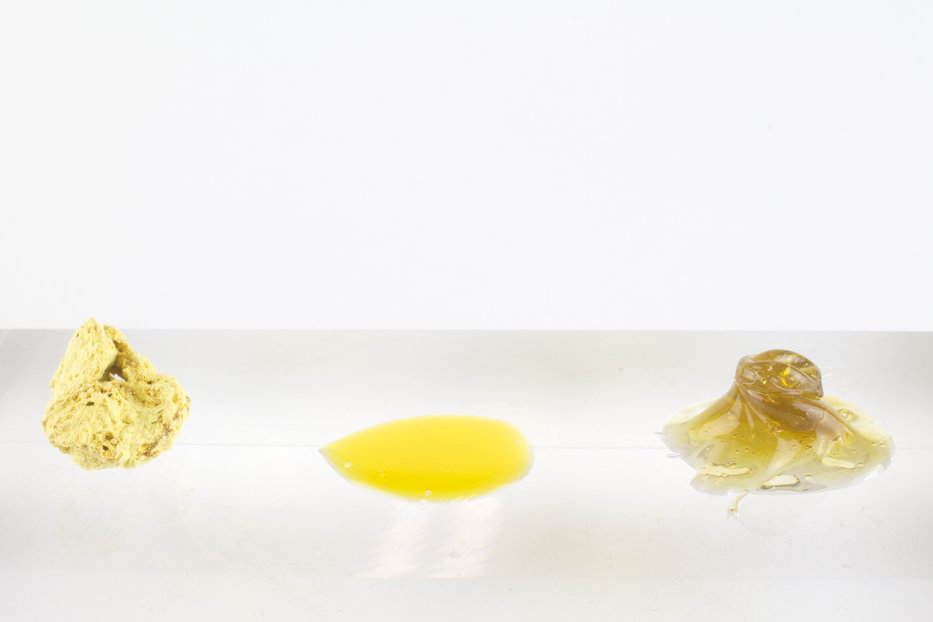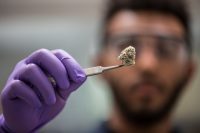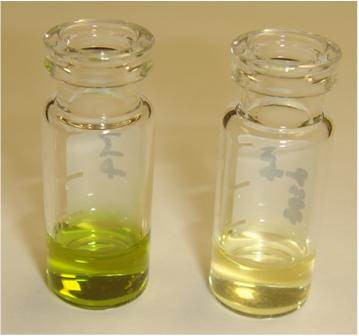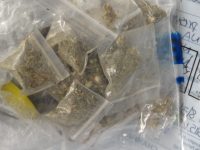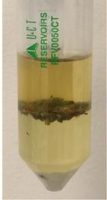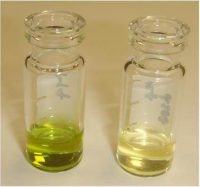Editor’s Note: Nick Bucci is a freelance cannabis writer. You can view his work here
As cannabis markets continue to gain traction, inconsistent and largely unpredictable markets have left recreational consumers in an informational fog. Try as the industry may, or may not to inform consumers, the lack of knowledge was evident when an established Colorado hash company opened a second operation in California. Expecting high demand for their solventless concentrates, the demand for their solvent-based counterparts came as a surprise. Initially hoping to eliminate solvent extracts from their product line-up, the company was forced to devote about half their overall production to solvent extracts, until information spreads and attitudes start to change. Over the past year several companies have joined the solventless side of history, but consumer understanding remains largely stagnant. For those immediately overwhelmed by terminology, cannabis extracts, concentrates or hash are all interchangeable terms describing concentrated cannabis. Under these umbrella terms, two distinct categories emerge depending upon whether chemical solvents were or were not used to extract the hash. Hence: solvent or solventless. A brief overview of cannabis concentrates will help consumers to understand the evolution away from solvent extractions and toward a superior solventless future.

Before regulated cannabis markets, cannabis extracts had long been in use. These old-world methods of cannabis extraction use very basic solventless techniques to create more potent, concentrated forms of cannabis. Dry sifting is easily the oldest form of cannabis extraction and a prime example of one solventless technique. Something as simple as shaking dried cannabis over metal screens and collecting the residue underneath creates a solventless product called keif. Dark brown bubble-hash, made popular decades ago, is another ancient technique using only ice and water to perform extractions without chemical solvents. After decades of stagnant and limited old-world methods, changes in legislation allowed cannabis sciences to flourish. These old-world hash methods were quickly forgotten, replaced by the astonishing progress of modern solvent extractions.

The emergence of solvent extracts revolutionized cannabis around 2011, creating new categories of cannabis products that exploded onto the scene. Not only did solvent extracts produce the most potent and cleanest forms of hash ever seen at this point, it also created new possibilities for hash-oil vape cartridges and cannabis extract infused edibles. These solvent extracts use butane, propane, or other hydrocarbon solvents to extract, or “blast” cannabinoids from the plant. By running solvents through cannabis and then purging or removing leftover, residual solvents, a super-potent, premium hash product is achieved. Regulated markets require testing to ensure only a safe level, if any, of the solvent used in the extraction process remains in the final product. This technology ushered in the first wave of concentrates to medical and recreational markets under the descriptive titles of wax, shatter and crumble. While these effective and affordable products can still be found today, far superior products have largely replaced wax and shatter. Distillation techniques can further purify and isolate THC-a, while removing harmful residual solvents. For a time, Solvent-free was used to describe this ultra-purified distillate, but the needless term has fallen out of use. Solvent-free is still a solvent extraction using chemical solvents, don’t be fooled. Distillation and CO2 extractions have fallen into general disfavor as they destroy the flavorful terpenes and valuable cannabinoids, that when present create an “entourage effect.” This “entourage effect” happens when the medicinal and recreational properties are most effective, pronounced, and impactful due to a full range of terpenes and cannabinoids being present in the final product. With companies manually reintroducing terpenes to their final extracts, it’s an attempt to restore what was lost during solvent extraction processes. Many brands claim to use cannabis derived or food-grade terpenes to infuse or reintroduce terpenes into their purified hash oils. While this adds flavor and taste, especially to distillate cartridges, it’s far from an ideal solution. Armed with this new information, the informed consumer looks for a full profile of terpenes and cannabinoids in their hash.

With terpene preservation a new priority, all aspects of hash making were reevaluated. By using fresh-frozen cannabis flower, solvent extractions quickly reached new heights. Using the same techniques as prior solvent extractions, the cannabis plant is frozen immediately upon harvesting, rather than trimming and drying the crop as usual. Freezing the plant preserves valuable terpenes helping to create a new category for hydrocarbon extracts under the general label of live resins. This live resin, containing vastly greater profiles of terpenes and cannabinoids than earlier waxes, shatters or crumbles is sold as live-resin sauce, sugar, badder, frosting, diamonds and more. Many versions of live resin re-use previous terms that describe consistencies. These live resin solvent extracts outperform the wax, crumble and shatters of old, and are priced accordingly. Some of the best solvent extracts available today use butane to extract hash oil, which forms THC-a crystals and diamonds seen in live resin sauces. Having learned the value of terpenes and cannabinoids, early efforts to purify THC were clearly misled. The industry defining use of fresh-frozen cannabis flowers greatly improved the quality of all extracts having realized the psychoactive effects are largely dependent on the various profiles of cannabinoids and terpenes. Pure THC-a crystals and isolates are easily achieved with solvent extractions but, produce inferior effects both medicinally and recreationally. Discovering the “entourage effect” as described earlier, these elements of cannabis allowed old-world solventless techniques to be re-inspired and reinvigorated with the benefit of healthy genetics and a hearty understanding of past mistakes.
Having gone full circle, solventless techniques are again at the forefront of the cannabis industry, having attained near perfection for our current understanding of cannabis anatomy.
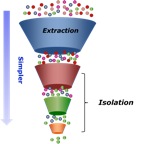
Using the lessons and tendencies of prior extractions, the solventless method, in all its final forms, begin with the same initial process to make ice-water hash oil. Often referred to as solventless hash oil (SHO), fresh-frozen flowers are submerged in ice and water, soaked and agitated before the water is filtered through mesh screens. As these mesh screens are measured by microns, the increasingly finer mesh works to separate and extract microscopic trichomes that break free from the cannabis plant. The 120- and 90-micron mesh screens usually collect pristine trichome heads. After scraping the remaining material from the screens, its sieved onto trays where the hash can dry using modern techniques of sublimation. The results are beyond phenomenal and are sure to shock even life-long cannabis consumers. This technique isolates only the most potent and psychoactive parts of the plant, to produce white to clear solventless ice water hash. When done with precision 6-star ice water hash is formed. The hash can be sold and consumed as is or undergo additional solventless techniques to produce hash-rosin. Not to be confused with live-resins, rosin uses pressure and slight heat to squeeze ice-water hash, into hash-rosin. Some companies have elected to whip their rosins into a solventless badder or allow their hash rosins to undergo a cold cure process that creates textures and varieties like hash rosin sauce. Regardless of the final solventless product, they all begin as ice water extractions. These simple, natural methods of extraction are quickly being adopted by companies known for live resin. As solventless extracts are safer, cleaner and superior in quality to solvent chemical extractions, the race is on as the industry shifts toward a solventless future.
While I’d be happy to never see another solvent extract again, without the miraculous breakthroughs and advances in all aspects of cannabis manufacturing and production we may have not yet arrived where we are today. When using solvents to extract, the trichomes, which contain the full spectrum of terpenes and cannabinoids, are dissolved by the solvent, which is then evaporated off, leaving behind dissolved trichomes. In solventless hash, these trichomes remain whole and are never dissolved or broken down. Instead they are broken free by agitation in ice and water, separating the trichome heads from their less-active stems. These valuable trichomes heads contain everything pertinent and are never destroyed, dissolved or melted like solvent-extractions are forced to do. The benefit of keeping the heads of these trichomes whole results in a far superior product expressing the full profile of terpenes and cannabinoids the way mother nature intended. This natural profile of trichomes lends itself directly to the entourage effect that solvent extracts were found to be missing.
Extraction techniques are not equal and depend upon whether quality or mass production is the aim. Solvent extracts have quickly begun to represent the old-guard of mass-produced cannabis concentrates, with the solventless new-guard focusing on quality, small batch, hash-rosin excellence.

